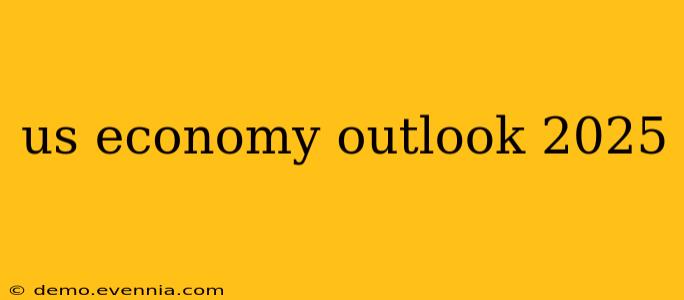The US economy in 2025 presents a complex picture, a blend of potential and peril. Predicting the future with certainty is impossible, but by analyzing current trends and potential risks, we can paint a plausible, albeit nuanced, outlook. This analysis will explore key economic indicators, potential challenges, and opportunities shaping the American economic landscape three years from now.
Macroeconomic Factors Shaping the 2025 Outlook
Several key macroeconomic factors will significantly influence the US economy in 2025. These include:
1. Inflation and Interest Rates: A Delicate Balance
The Federal Reserve's aggressive interest rate hikes aim to curb inflation. However, the effectiveness of this strategy and its impact on economic growth remain uncertain. By 2025, we might see inflation either tamed to a manageable level, potentially around the Fed's 2% target, or still lingering, albeit at a lower rate than currently experienced. This will depend on various factors, including global supply chain dynamics, energy prices, and consumer demand. High interest rates, while curbing inflation, can also stifle investment and economic growth, leading to a potential recessionary risk.
2. Labor Market Dynamics: A Tightening or Loosening Grip?
The labor market currently exhibits tightness, with low unemployment and strong wage growth. However, the impact of potential future interest rate hikes and economic slowdowns on employment remains to be seen. By 2025, we could see a more balanced labor market, possibly with a slight uptick in unemployment, or persistent labor shortages, depending on the overall economic trajectory. Wage growth will be a key indicator to watch, as it influences inflation and consumer spending.
3. Geopolitical Uncertainty: Ripple Effects on the US Economy
Global geopolitical instability, including the ongoing war in Ukraine and rising tensions in other regions, creates significant uncertainty. These factors impact energy prices, supply chains, and investor confidence, creating ripples that affect the US economy. The extent of these impacts in 2025 depends on the resolution (or lack thereof) of these geopolitical issues.
Potential Challenges and Opportunities
The US economy in 2025 faces several potential challenges and opportunities:
Challenges:
- Recessionary Risk: Aggressive interest rate hikes and persistent inflation increase the risk of a recession in the coming years. The depth and duration of any potential recession will significantly impact the 2025 economic outlook.
- Debt Ceiling Concerns: The ongoing debate around the US debt ceiling highlights the vulnerability of the nation's fiscal position. Failure to address this could lead to economic instability.
- Technological Disruption: While technological advancement fuels economic growth, it also presents challenges, including job displacement and the need for workforce retraining and adaptation.
Opportunities:
- Innovation and Technological Advancement: Continued investment in research and development, particularly in areas like renewable energy and artificial intelligence, could fuel economic growth and create new jobs.
- Infrastructure Spending: Government investment in infrastructure projects can stimulate economic activity and improve productivity.
- Reshoring and Nearshoring: Efforts to bring manufacturing and supply chains back to the US or closer to home can strengthen the domestic economy.
Conclusion: A Cautiously Optimistic Outlook
The US economy in 2025 presents a mixed bag. While challenges exist, particularly regarding inflation, interest rates, and geopolitical uncertainty, there are also potential opportunities for growth and innovation. The ultimate outcome will depend on how effectively policymakers navigate these complexities and whether the private sector adapts and innovates in response to changing circumstances. A cautiously optimistic outlook is warranted, emphasizing careful monitoring of key economic indicators and proactive strategies to mitigate potential risks. Further analysis and ongoing monitoring will be crucial in refining this forecast as we approach 2025.

